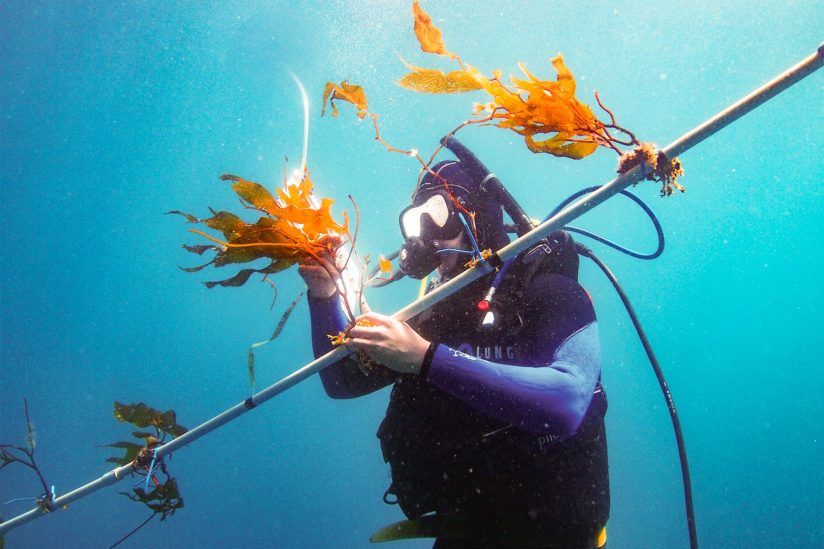
Kelp is an algae used for biofuels. Unlike say, corn or sugarcane, it doesn’t require either land or added resources like fertilizers to grow. Kelp grows naturally in the ocean and is one of the worlds fastest-growing plants. Besides that, it provides habitat and shelter for marine animals.
Growing kelp in controlled aquaculture settings poses difficulties. For example, for the algae to really thrive it needs to be fixed to a membrane/substratum within sun-drenched waters. However, the deeper parts of the ocean (where the sun don’t reach) has the abundance of nutrients the kelp needs to grow. A team of researchers from the University of Southern California came up with a solution to get around the issue.
To get the best of both the sun-drenched shallow sea and the nutrient-rich deep sea the researchers designed a kelp elevator. It raises the kelp attached to it up to the sunny surface during the daytime. At night is lowers the kelp to depths of around 260 feet (80 metres). This allows the algae to soak up vital nutrients like nitrate and phosphate. USC News explains that young kelp is attached to a horizontal beam. The entire structure is raised and lowered in the water column using an automated switch.
Thanks to the elevator scientists were able to grow kelp much faster over the course of 100 days. The primary test was conducted off the coast of California. Actually, the scientists produced four times the biomass of kelp grown without the kelp elevator.
Brian Wilcox, co-founder and chief engineer of the company Marine BioEnergy, which came up with the elevator said:
“The good news is the farm system can be assembled from off-the-shelf products without new technology. Once implemented, depth-cycling farms could lead to a new way to produce affordable, carbon-neutral fuel year-round.”
Photo: USC Photo/David Ginsburg via USC News.




